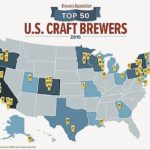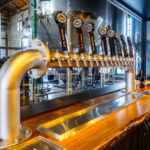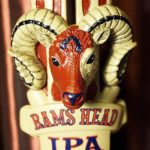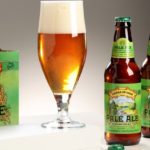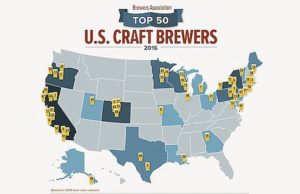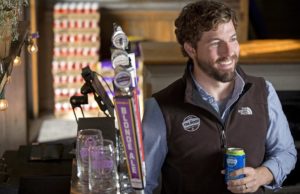Opinion: You’ll be drinking brewers’ ‘safe’ craft beer in 2017
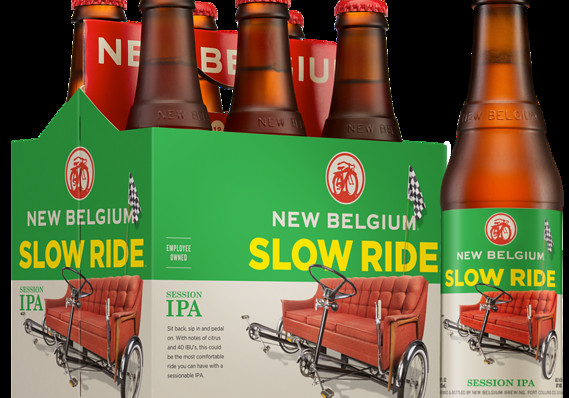
This isn’t a dead time of year for the beer industry by any stretch: If anything, it’s when things just get interesting.
Last year, on Dec. 18, Anheuser-Busch InBev BUD, -1.25% announced that it was buying Arizona brewer Four Peaks. On Dec. 21, it picked up Camden Town Brewery in the U.K. Finally, on Dec. 22 (just three days before Christmas) it announced its purchase of Colorado’s Breckenridge Brewery.
I remember sitting in a hotel room in Philadelphia watching the messages come in from Adam Warrington, a spokesman for A-B’s craft division, The High End, and realizing that his company just didn’t operate on a holiday schedule.
This year, 10 days before Christmas, Pabst announced a partnership with New Holland Brewing in New Holland, Mich. Former Duvel USA executive Simon Thorpe, who helped Duvel acquire the Boulevard and Firestone Walker breweries, joined Pabst just before the announcement and an announced deal with Mexico’s Minerva brewery.
New Belgium’s big move
With Anheuser-Busch InBev and other big breweries looming even larger in the marketplace, bigger craft competitors don’t have the luxury of coasting into the holidays. By the end of the first week of December, I’d received 2017 release schedules from a number of larger craft breweries who were ready to lay out their strategies for the new year. New Belgium, the eighth-largest brewery in the country, kicked things off by announcing that it would be gutting its entire line of India Pale Ales and replacing them with new varieties with different hop profiles.
Why would New Belgium do this? Well, there are a few reasons. For one, the Fort Collins, Colo.-based brewery just opened another location in Asheville, N.C. It’s also building a barrel-fermentation facility at a hotel in Denver and a party deck at Colorado State University’s football stadium. Beyond that, Chief Executive Officer Christine Perich just departed New Belgium after a little more than a year on the job and left folks around the employee-owned company wondering if there were plans to sell.
New Belgium’s production grew from 792,000 barrels in 2013 to 916,000 barrels last year, with sales revenue growing by more than 40% in that span. It now distributes beer in 45 states and D.C. and can’t really afford to stagnate either creatively or financially. That provided some of brewmaster Peter Bouckaert’s motivation for updating core styles and expanding the company’s barrel-fermentation program, but it also motivated New Belgium to update its Ranger and Rampart IPAs and their more bitter, citrusy Cascade and Simcoe hops to “Voodoo” Ranger IPA, “Voodoo” Ranger Imperial IPA and “Voodoo” 5 Hope Ale with juicier, more tropical Mosaic hops and more weather- and bug-resistant Calypso, Bravo and Delta hops.
New Belgium’s 2017 lineup also adds a lime ale, a ginger sour ale and a 4.8% alcohol by volume session ale (in 24-ounce cans, no less), but it’s the wholesale changes to the IPA that are worth noting. Sure, 24-ounce cans of low-test ale might open up markets in stadiums and the lower shelves of convenience-store coolers, but those IPAs address changing tastes and a changing agricultural environment in one broad stroke. Though it’s fairly abrupt and does little for folks who enjoyed original-recipe Ranger and Rampart, it shores up sales of core brands at a time when even sales of the flagship brands of larger craft brewers like Sierra Nevada and Boston Beer Co.’s SAM, -0.21% Samuel Adams are, well, flagging.
It also recognizes that IPA is where a whole lot of the growth is. The Brewers Association craft beer industry group notes that while craft beer’s growth has slowed from double-digit percentage points in recent years to 8% by mid-2016, the IPA now represents one out of every four craft beers sold. Meanwhile, as New Belgium also addressed with its 4.8% ABV Dayblazer Easygoing Ale and the rebranding of its Blue Paddle Pilsner to Bohemian Pilsener, more “sessionable” low-alcohol styles have seen sales rise 33% in the past year.
That’s where Grand Rapids, Mich.-based Founders took its cue for 2017. The 20th-largest brewery in the U.S., Founders built its reputation on barrel-aged beers like Backwoods Bastard and KBS, but found tremendous success with a 4.7% ABV India Pale Ale known as All-Day IPA. It became such a strong seller and so key to the brand’s success that Founders started canning it in 2013, put those cans into 15-packs (typically the domain of more widely purchased light lagers) and, next year, will be offering it in a ballpark-friendly 19.2-ounce can. However, this year Founders also made clear that it would be getting rid of its Pale Ale. Why? Because pale ale doesn’t have “IPA” on its label and doesn’t sell as well as a similarly hop-driven, low-alcohol beer.
Founders knows what’s moving right now, which is why seasonals that fall firmly within this hop-loving, low-buzz zeitgeist — Azacca IPA, PC Pils and Mosaic Promise (there’s that hop again) — are all going into All-Day IPA-style 15 packs. The brewery now has full distribution in 28 states, limited distribution in another 10 and plans to bring its beer to Washington, Oregon and Idaho within the next year. Backed with an investment from big Spanish brewer Mahou San Miguel, Founders is aiming for the type of growth that comes with giving the people what they want. The drinkers want cans, they want hops, they want specialty barrel-aged beers, and they don’t want to get fat off the beer they drink most often.
They also seem to want a little more value for their dollar, which led to a bit of an identity crisis for the folks at Manhattan, Kansas-based Tallgrass Brewing Co. Long built around 16-ounce cans with flashy graphic illustrations, Tallgrass has informed drinkers that it’s going to be transitioning its entire line to 12-ounce cans. Why, you ask? Because the 16-ounce can is still a bit of an odd fit in an industry where the standard is 12, and the added cost of producing them increasingly isn’t worth the consumer’s ire for feeling that he or she is getting robbed.
When you see 16-ounce cans out in the wild, with notable exceptions, they typically come in packs of four. However, your standard pack of 12-ounce cans, with notable exceptions, comes in packs of six. The former gives a drinker 64 ounces of beer, while the latter gives them 72. Not only does the consumer feel that he or she is being deprived of that extra 8 ounces, but it doesn’t look good when your $11 16-ounce four-pack of 6.7% ABV IPA is sitting next to someone else’s $11 six-pack of 6.7% ABV IPA.
Tallgrass is not only eliminating that tough marketplace comparison, but it’s also taking the same tact as New Belgium and tinkering with its formulas a bit. Its 8-Bit Pale Ale now gets some Mosaic hops with its Columbus, Cascade and Centennial. Its Top Rope IPA gets some Ekuanot hops with its Cascade, Centennial and Simcoe. There are also three other IPAs in the Tallgrass lineup, complementing fruity, low-alcohol beers like Raspberry Jam (4.8% ABV) and Key Lime Pie (4.2% ABV). Sure, there will still be 19.2-ounce stovepipe cans of high-alcohol, limited-release, barrel-aged beers, but Tallgrass has seen the same future for its 18-state distribution radius as every other brewer has.
In the waning days of 2016, the message for beer drinkers in 2017 is clear: Bigger craft brewers are maximizing relevance while minimizing risk. That means there’ll be a lot of IPA, pilsner and session beer out there. Hope you like it.
Click here to view original web page at www.marketwatch.com


